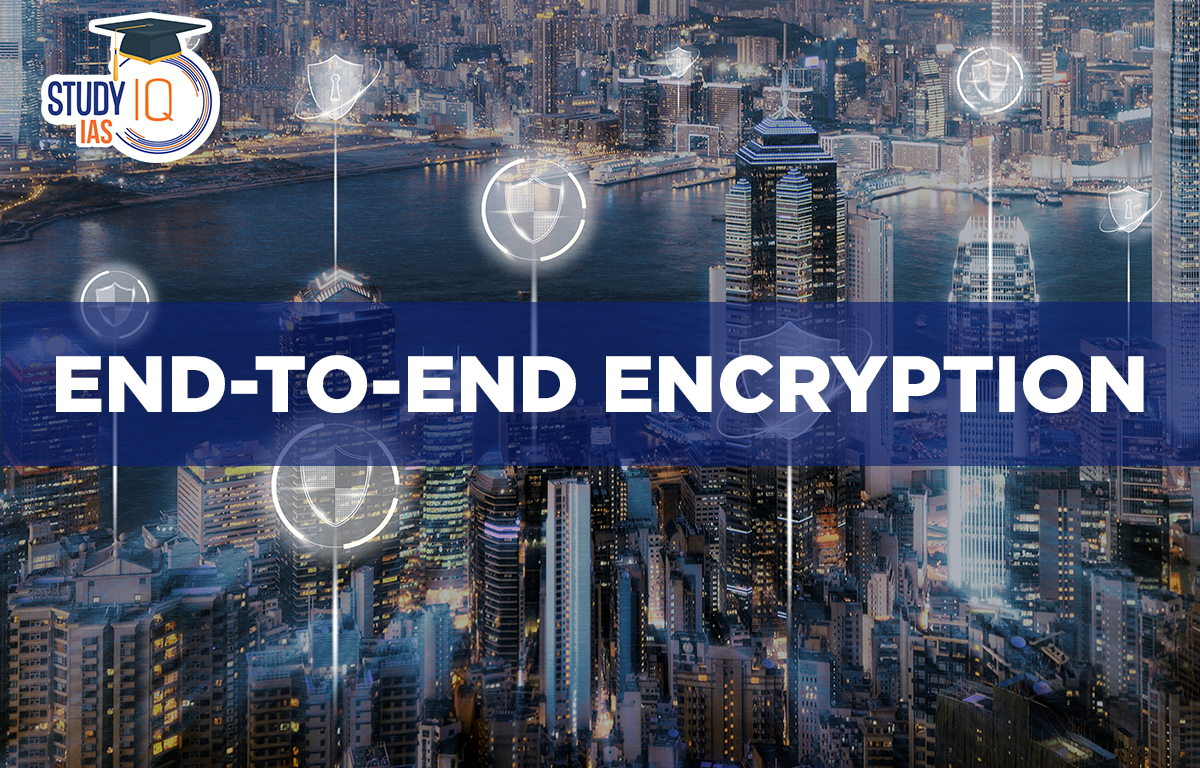Table of Contents
What is End-to-end Encryption?
- End-to-end encryption is a method of communication in which data being shared between two devices is encrypted.
- This method prevents third parties like cloud service providers, internet service providers (ISPs) and cybercriminals from accessing data while it is being transferred.
- Mechanism: The algorithm used in this communication method transforms standard text into an unreadable format. This format can only be deciphered and read by those with the decryption keys.
- These decryption keys are stored on endpoints and not with any third parties including companies providing the service.
- This method does not protect metadata, which includes information such as when a file was created, the date of sending message and the endpoints between which data was shared.
- Application: End-to-encryption is used while transferring business documents, financial details, legal proceedings, and personal conversations.
- It can also be used to control users’ authorization when accessing stored data.
- Currently, popular messaging apps such as Signal, WhatsApp, iMessage, and Google messages use end-to-end encryption.
Why are Companies using End-to-end Encryption?
- Threat to consumer data: Breach of consumer data has tripled between 2013 and 2021. More than 1.1 billion personal records were exposed in 2021.
- End-to-end encryption will provide additional protection against hacking attacks launched by well-funded groups.
- Protection against government snooping: End-to-end encryption technology secures users’ data from snooping by government agencies.
- This makes it popular among activists, journalists, and political opponents.
Working of End-to-end Encryption
Effects of End-to-end Encryption
- On Users: End-to-end encryption ensures that user data is protected from unnecessary parties such as service providers, cloud storage providers, and companies that handle encrypted data.
- Even if there is a data breach, data cannot be accessed by anyone else other than authorized party.
- On government agencies: End-to-end encryption makes it harder for service providers to share user information with authorities.
- Many government agencies have expressed displeasure at the idea of increasing use of end-to-end encryption by technology companies.
- These agencies believe that end-to-end encryption makes it convenient for terrorists to use messaging platforms to communicate without fear of eavesdropping.
- On companies: Securing user data will enhance the reputation of messaging platforms. Their user engagement is expected to increase.
End-to-end Encryption: Pros and Cons
| Pros | Cons |
| End-to-end encryption will prevent accessing data while it is being transferred. | Encryption does not hide the fact that data is being transferred. Record of transactions can still be found. |
| Since data is encrypted, there is no fear of manipulation through interception by third party. | The technology can be misused by individuals for their malicious activities, including terrorism. |
| Upholds individual privacy. Protects interests of rivals of establishment. | The protection offered by this communication service is not guaranteed if third party gets access to device. |
| Financial and business secrets can be protected from competitors. |


 List of Governor of States in India, Con...
List of Governor of States in India, Con...
 Daily Quiz 15 July 2025
Daily Quiz 15 July 2025
 Maratha Military Landscapes of India Add...
Maratha Military Landscapes of India Add...





















